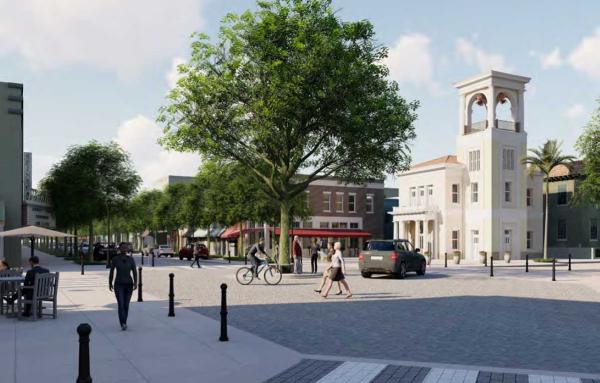
The long road home for The Bahamas
It is heartbreaking to see the suffering and devastation in The Bahamas from Hurricane Dorian, which struck these islands in early September, and thoughts of those lonely rebuilding years ahead are even harder to bear for all of us who love The Bahamas. It’ll be lonely because after the first outpouring of emotion and assistance, the news cycle moves on to the next disaster and Bahamians and those who really love them are left alone with the reconstruction. It must ever be so; that’s the way the news works, and since Katrina the US has averaged two federally declared disasters per week, so attention moves quickly. Here are some things we’ve learned beginning with Katrina that I deeply hope can be useful in the Bahamian rebuilding; at the end you’ll find the backstory of how these lessons were learned.
The initial shock
It is especially important for the leaders to take care of themselves and weather the initial shock of the devastation. The Katrina trauma was so great that one of the mayors on the Mississippi Gulf Coast had a breakdown of some sort and simply disappeared. Months later, he was found living with relatives somewhere in Minnesota. Prime Minister Hubert Minnis looked brave and strong in the press conference Tuesday evening, but I hope he and the local officials can continue to take care of their own mental and emotional wellbeing because the people need them now like they’ve never needed them before.

Small recovery nodes
Recovery begins within days of first response, because those who have survived are not only injured and traumatized, but are very soon in need of water, food, and porta-potties, as we all know. When the recovery nodes are set up, make them smaller and more closely-spaced than you might think because in severely damaged places like Marsh Harbour, pretty much all of the vehicles damaged by wind and storm surge are total losses and the people are on foot for the foreseeable future. And because the footpaths are strewn with debris, they’re not able to walk as far as they would have before the storm. Spacing between nodes should be no more than a half-mile in all directions in cities, towns, and villages. Those nodes ideally should be located on a parking lot, which can be small because the nodes will be small. The parking lot can quickly be cleared of debris setting up a hard-working surface of paving which is already designed to drain rainwater away.
Initial shelter
Hard shelter is likely months or longer in the future because so much transportation infrastructure is broken at the beginning, and hard shelter or its components must be purchased and delivered or in most cases manufactured. After Katrina, it took us nearly six weeks to get the first inkling of what FEMA’s plans for FEMA trailers even looked like, and while they were able to deliver a few travel trailers early, the FEMA trailers that were manufactured after the storm didn’t even start getting delivered in quantity until early the next year. The fastest shelter deliverable at the beginning of recovery is likely to be tents. A tent dispensary should be located at each recovery node.

After Katrina, I saw people living in tents on the Mississippi Gulf Coast more than a year after they storm. The US had the advantage that people could just leave the disaster area in the wake of the storm and stay with relatives in other parts of the country. Expect some inter-island migration within The Bahamas, but migration to other nations is mostly limited to those with passports and the ability to travel overseas, especially given the current US immigration climate. So The Bahamas will be more burdened with sheltering its own than the Gulf Coast was after Katrina or later storms like Harvey.
Restarting local economies early
Severe disasters like Dorian bring a jarring and immediate shutdown to local economies, which burdens the government because of the sudden end of tax revenues from the affected areas. From the beginning, employ local people to do the things they were doing before the storm. Let the local cooks and servers hand out packaged meals. Let the local outfitters hand out tents. But as soon as you can, bring in what I call “single-crew workplaces” which as the name implies are small enough that they can be run by one crew, and get them back in business where there is some tiny trickle of income to those who may have lost everything. As I wrote in the new edition of A Living Tradition [Architecture of The Bahamas] (commissioned by Nassau developer Orjan Lindroth), The Bahamas already builds some of the best single-crew workplaces on earth, so you know how to do this. These are small, simple shelters like what you see all along Bay Street on Harbour Island, for example. They can be quickly built in place, or if there are food carts available, they can be brought into the disaster area.

After Katrina, we saw a terrible vicious cycle. In several towns like Pass Christian and Waveland, all businesses were destroyed, so everyone who worked in town was out of work and almost everyone lost their homes. But the banks still wanted the mortgage payments. Unfortunately, most of the insurance claims weren’t paid until a year or two after the storm, and by the time the claims were paid, the people had gone bankrupt and so the banks got the settlements, not the people. Many residents had no choice but to leave town and try to start a new life somewhere else, bankrupted and penniless. Obviously, some parts of this story aren’t quite the same in The Bahamas, but the sooner you can get people back in business doing what they had been doing so they can generate at least a bit of income, the more likely they’ll be able to maintain a toehold in town and not be forced to leave.
A better home
In every disaster I’ve ever been involved with, the most powerful human urge is to put things back exactly the way they were before the storm. I’ve collaborated with Laura Clemons, the famous (or infamous, depending on which side of the table you’re on) FEMA Hacker on a number of disasters, and she has developed a system of working with communities to rebuild in a much better way by gaining access to a lot more FEMA funding than they would normally offer. Unfortunately, most places are so intent because of the basic human urge to go back home as soon as possible that they aren’t open-minded about building back better. While there’s no FEMA in The Bahamas, this overpowering urge to go back home again happens in disasters around the world. It will certainly happen in The Bahamas after Dorian.

Here’s why it’s such a bad idea: places like The Mudd and Pigeon Peas built on the lowest land will inevitably flood again someday in a much lower storm surge than Dorian’s, and be blown away again with lower wind speed and duration than occurred this time. It’s only a matter of time. I’ve walked through The Mudd, and the best quality of construction there was patterned after US tract housing of the 1960s, which meant that it contained none of the storm-strong wisdom of traditional Bahamian architecture. Any new buildings built this way will someday likely face the same fate. It’s unconscionable for the poorest of the poor to also have to bear the destruction of their homes in a hurricane. I fear that when the final toll of loss of life is known, The Mudd and Pigeon Peas will bear a seriously disproportionate share of the loss.
It’s not reasonable to think that the government will build everyone a house; that’s just not happening for many obvious reasons, including the fact that the coming months and years will see national finances unusually stressed because of Dorian. So what can be done to help people live in safer places, even while many of them have lost everything?
Andrés Duany and I came up with the idea of the Katrina Cottages on the Saturday after the hurricane. Originally conceived as “FEMA trailers with dignity,” they became much more than that, but the core idea was to start very small so you get a foothold on home again, with the idea of building back your full home incrementally over time as financial stability returned. Working with the Prince’s Foundation in Rose Town (next to Bob Marley's Trench Town in Kingston, Jamaica) I developed a “wet appliance” which was a reinforced concrete box containing a bathroom and with a simple kitchen attached to one side. The idea was that if an outside entity (the government or a charitable foundation of some sort) could at least bring in a wet appliance, people could from that core build a complete house in small increments over the years. The challenges in Marsh Harbour and Freeport aren’t the same as in Rose Town, but some combination of initial core from which people could at least achieve personal sanitation and food and then build in small increments could be useful.
One key: if our ancestors were lucky enough to survive a hurricane (mine were from near Charleston, South Carolina) but their house was unlucky enough not to, when they crawled out of the wreckage of their house and saw their neighbor’s house still standing, they said “I’m gonna rebuild like that.” It was hard-won wisdom. And to be clear, in The Bahamas, it was Bahamian wisdom. Yes, The Bahamas was a colony of England for a long time, but if you go to England, you’ll see that there’s little resemblance between homes there and homes here. Bahamian architecture arose primarily from these shores, not those. And it’s unusually well-adapted to surviving the storms that have forever been a part of this place.
If The Bahamas rebuilds using the wisdom hard-earned on these islands over time, then this great disaster can result in a renewal of the places and buildings that have made The Bahamas world-famous, and have long driven the economy. But if not, then Dorian will forever be remembered as a great tragedy that changed the nation for the worse. Either way, it’s a long way home. I just hope that long road leads to a better home.
This post originally appeared on The Original Green blog.





